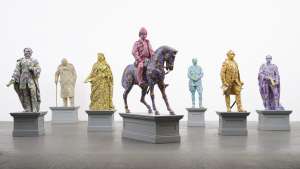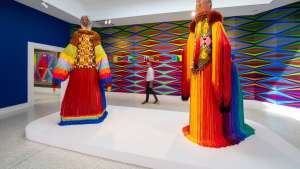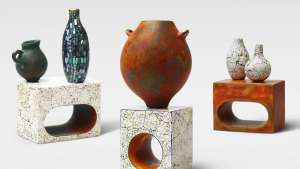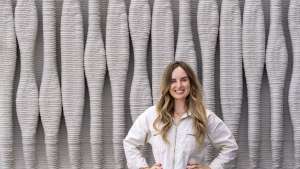What inspired you to follow an artistic path?
I love creating. When an idea in vision form comes to me, I see the final product in mind, and it is my conviction to see it fulfilled. In the same way, I like to describe my following an artistic path as: ‘I saw myself in the future’. From primary school and then on into high school, I did art. People would ask what I would do one day, and my response was always ‘an artist’ – even though I may not have entirely believed it, but that was what I dressed up as on career day, every time.
How would you describe your creative style/aesthetic?
I would describe my creative style as serious play, yet clean and design/detail-conscious – that may sound a bit ambiguous, but it works. This includes every area of creative expression relating to my practice.
When and how did you develop your love for printmaking?
My love for printmaking developed during the third year of my undergraduate studies, when I was first introduced to silkscreen printing and then lithography printing during our workshop electives. I love the traditional process of manually producing a print, albeit 90% preparation and 10% execution. The creative process of developing a silkscreen print is very rewarding - from drawing, composition and design, to colour, as well as its ability to be transferred onto paper and other textile mediums.
Then lithography, which I was initially nervous to try because it requires a limestone that weighs probably four times more than me, and the process applies some scientific methodology. But I ended up loving the process. Although truthfully speaking, silkscreen printing is still my number one printmaking medium.
Your work explores coloured culture and identity, what are some of the messages you hope to convey through these themes?
I am of the belief that all you know is not all there is to know. The thing about assumptions is that they often become historical knowledge, the same goes for ideologies. That is, they are told from a particular perspective and narrative which can be a hindrance. I describe my work as visually redeeming narratives. Yes, coloured culture and identity may be explored, but I am more interested in visually negotiating thought or reason for ideas that are misunderstood, to which many ascribe as truth that really are not. My hope is that through aesthetic and visual language, which often provokes a response, I am able to shift the viewer or audience’s perspective and understanding around particular knowledge and thought in a visually stimulating and creative way.
Like many young creatives, would you say you occasionally experience a sense of 'imposter syndrome'? If so, how do you focus on being inspired by others without comparing your work?
No, I don’t experience ‘imposter syndrome’. I think perhaps during my studies, in my first year, I experienced some of that – mostly because the artistic standard from high school to university was a bit daunting. Nonetheless, I am often inspired by other creatives or artists, and I appreciate their work – especially those who inspire me to create more. My belief is that everyone has a unique creative expression that should be voiced, and you can’t do that while comparing your work to someone else’s. If I have been graced with a creative ability it must be nurtured, and my role or focus is to be a good steward of it, without comparing, so that it is uniquely expressed.
What are you currently working on?
I am currently working on a collaboration project called Biography of Uncharted People being run by the history department at Stellenbosch University. It deals with a range of archival records and artefacts that captures the complex histories of the Cape Colony. I will be creating an artwork in response to a specific research topic relating to slavery - which will form part of an exhibition taking place in October. Otherwise, I am always busy contemplating an idea and creating.
Credits:
Chelsea Robin Ingham










